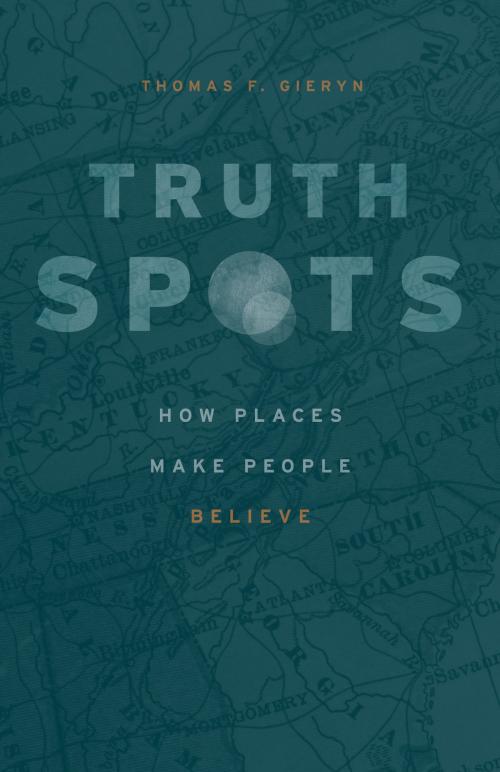Truth-Spots
How Places Make People Believe
Nonfiction, Social & Cultural Studies, Social Science, Sociology, History| Author: | Thomas F. Gieryn | ISBN: | 9780226562001 |
| Publisher: | University of Chicago Press | Publication: | May 22, 2018 |
| Imprint: | University of Chicago Press | Language: | English |
| Author: | Thomas F. Gieryn |
| ISBN: | 9780226562001 |
| Publisher: | University of Chicago Press |
| Publication: | May 22, 2018 |
| Imprint: | University of Chicago Press |
| Language: | English |
We may not realize it, but truth and place are inextricably linked. For ancient Greeks, temples and statues clustered on the side of Mount Parnassus affirmed their belief that predictions from the oracle at Delphi were accurate. The trust we have in Thoreau’s wisdom depends in part on how skillfully he made Walden Pond into a perfect place for discerning timeless truths about the universe. Courthouses and laboratories are designed and built to exacting specifications so that their architectural conditions legitimate the rendering of justice and discovery of natural fact. The on-site commemoration of the struggle for civil rights—Seneca, Selma, and Stonewall—reminds people of slow but significant political progress and of unfinished business. What do all these places have in common? Thomas F. Gieryn calls these locations “truth-spots,” places that lend credibility to beliefs and claims about natural and social reality, about the past and future, and about identity and the transcendent.
In Truth-Spots, Gieryn gives readers an elegant, rigorous rendering of the provenance of ideas, uncovering the geographic location where they are found or made, a spot built up with material stuff and endowed with cultural meaning and value. These kinds of places—including botanical gardens, naturalists’ field-sites, Henry Ford’s open-air historical museum, and churches and chapels along the pilgrimage way to Santiago de Compostela in Spain—would seem at first to have little in common. But each is a truth-spot, a place that makes people believe. Truth may well be the daughter of time, Gieryn argues, but it is also the son of place.
We may not realize it, but truth and place are inextricably linked. For ancient Greeks, temples and statues clustered on the side of Mount Parnassus affirmed their belief that predictions from the oracle at Delphi were accurate. The trust we have in Thoreau’s wisdom depends in part on how skillfully he made Walden Pond into a perfect place for discerning timeless truths about the universe. Courthouses and laboratories are designed and built to exacting specifications so that their architectural conditions legitimate the rendering of justice and discovery of natural fact. The on-site commemoration of the struggle for civil rights—Seneca, Selma, and Stonewall—reminds people of slow but significant political progress and of unfinished business. What do all these places have in common? Thomas F. Gieryn calls these locations “truth-spots,” places that lend credibility to beliefs and claims about natural and social reality, about the past and future, and about identity and the transcendent.
In Truth-Spots, Gieryn gives readers an elegant, rigorous rendering of the provenance of ideas, uncovering the geographic location where they are found or made, a spot built up with material stuff and endowed with cultural meaning and value. These kinds of places—including botanical gardens, naturalists’ field-sites, Henry Ford’s open-air historical museum, and churches and chapels along the pilgrimage way to Santiago de Compostela in Spain—would seem at first to have little in common. But each is a truth-spot, a place that makes people believe. Truth may well be the daughter of time, Gieryn argues, but it is also the son of place.















